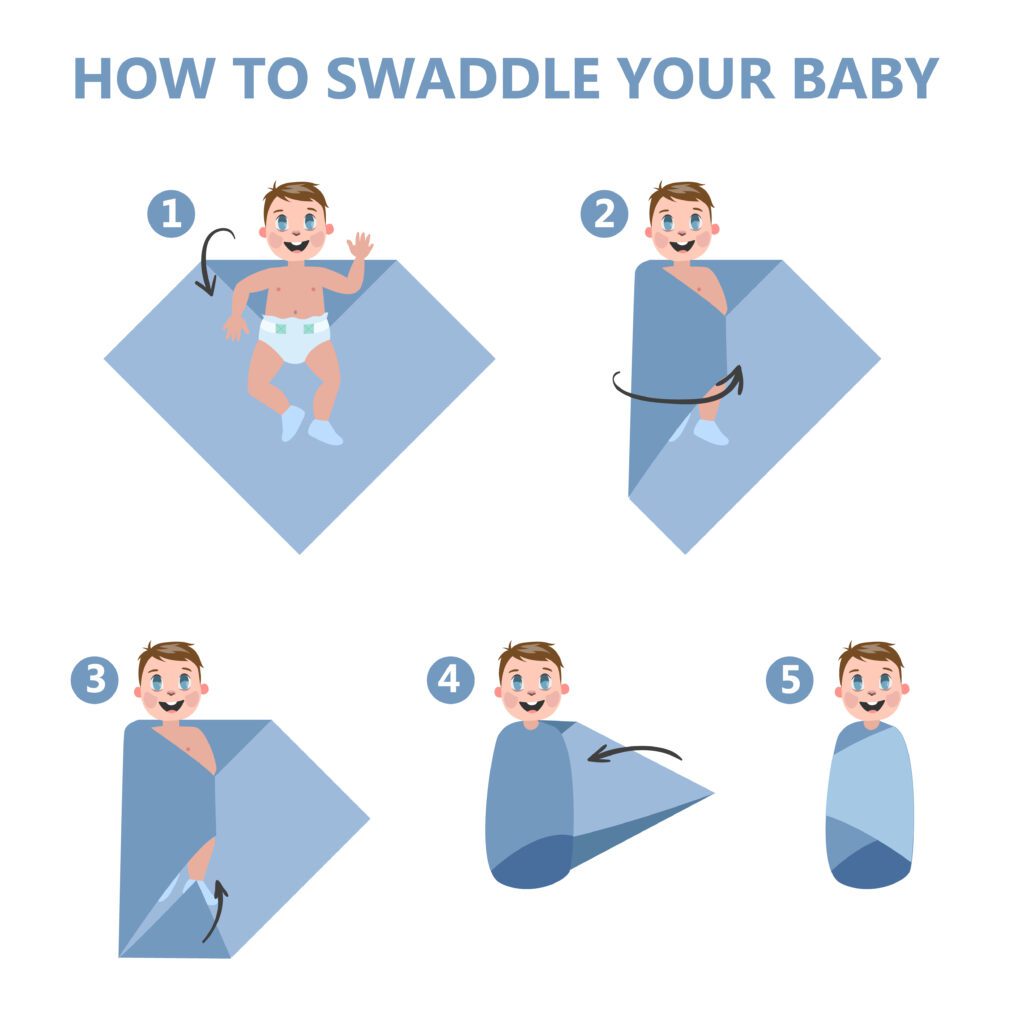Key Takeaways – Baby Swaddling
- Baby swaddling, a practice with roots dating back centuries, involves wrapping a baby securely from shoulders to feet with a small blanket. Various cultures have their unique swaddling techniques, including the use of bands or more traditional methods.
- Baby Swaddling can serve as an effective way to soothe a fussy infant and has been linked to a reduced risk of Sudden Infant Death Syndrome (SIDS) by stabilizing the baby’s sleeping position during the highest-risk period, typically at three months of age.
- Swaddling also promotes longer and more restful sleep by preventing sudden movements that can awaken the baby, potentially benefiting the sleep quality and quantity of both the baby and parents. It provides a sense of security, reminiscent of the womb, and helps with temperature regulation.
- Swaddling can have benefits during waking hours as well, making it easier to carry and hold the baby and allowing better focus during breast or bottle feeding by keeping the baby’s hands out of the way.
- While swaddling is generally most effective from newborn to approximately four months, babies accustomed to swaddling may continue to benefit from it for a longer period. When introducing swaddling to a baby, an adjustment period may be needed, and modified swaddling techniques, like leaving the arms free, may be appropriate. Always ensure that the swaddle is snug but not too tight, maintaining the baby’s comfort and circulation, and seek guidance from a healthcare practitioner to learn the correct swaddling technique.

The practice of baby-swaddling dates back centuries and is still common in many cultures. Swaddling involves wrapping a baby securely from shoulders to feet with a small blanket. American Indians and people from the Middle East use bands and more sophisticated swaddling techniques, but more traditional swaddling techniques are still practiced in such countries as Turkey and Albania.
Not only can swaddling be a great way to calm and sooth a fussy infant, it’s also been shown to lower the risk of SIDS (Sudden Infant Death Syndrome). At the age of three months, when the risk for SIDS is greatest, traditional American swaddling techniques allow a baby to escape. It allows the baby to stay in a more stable position while sleeping, thereby lowering the SIDS risk. In addition, swaddling has been shown to help babies sleep longer and more restfully by preventing the sudden movements that can cause them to wake up, thereby improving mom and dad’s sleep quality and quantity also. Babies who are swaddled are said to feel secure, similar to how they felt while in

